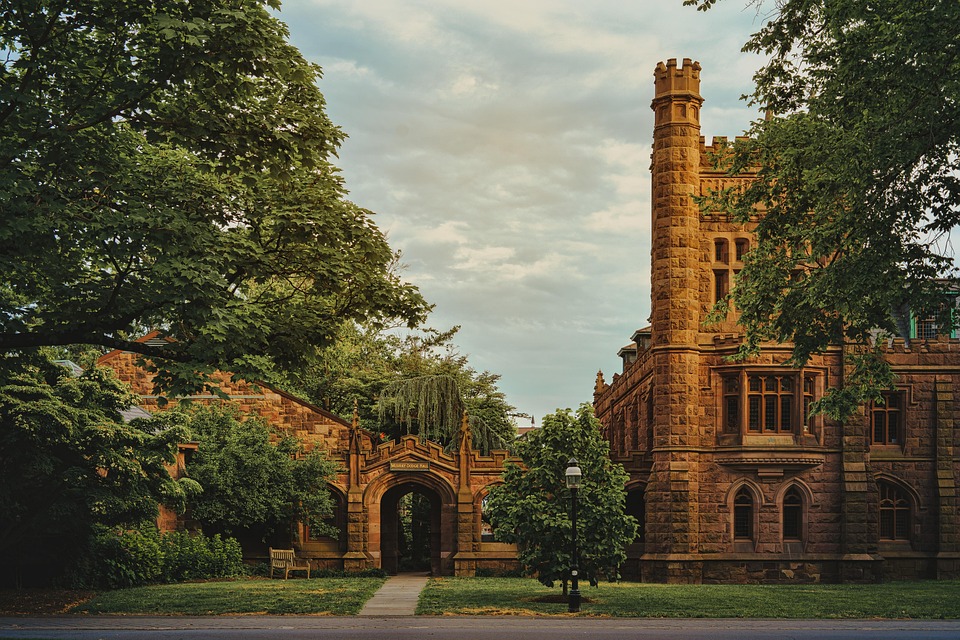Before wearing a beige Wfp Vest and boots to face hurricanes, wars and refugee camps, the Portuguese scientist worked with satellite imagery and cartography, creating cards to support humanitarian missions, until he realized that he did not want to stay behind a computer screen.
On the occasion of World Humanitarian Daymarked every year on August 19, Mr. Matos shared his story with UN News.
Pedro Matos joined the PAM response team after the deadly Idai cyclone in Mozambique in 2019 (file)
Hurricane in war
“At some point, that was not enough,” he recalls about his space engineering work. “I didn’t want to make cards so that other people made humanitarian answers. I want to take these cards and be the one who answered. ”
That’s exactly what he did. At WFP, he first developed cards in the field, then continued to coordinate the agency’s emergency operations.
Since then, he has visited dozens of countries often at the epicenter of crises, from Hurricane Idai to Mozambique when the war in Ukraine.
In 2018, Pedro Matos watched the Kutupalong refugee camp where Rohingyas refugees live. (deposit)
“Like moving a whole government”
Coordinating an emergency response is like “moving an entire government”, where each United Nations agency represents a “ministry” and the response only works when everyone meets on the four essential areas of a crisis response: food, shelter, water and health.
After returning from a mission to Bangladesh, he described the efforts to respond to Cox’s Bazar, the largest refugee camp in the world and will house 700,000 people who have fled violence in Myanmar.
“We were able to provide better conditions for people to live in these limbo with a little more comfort,” he said, also remembered his visit there in 2018 at the height of the crisis.
At the time, “a million people crossed the border in a month”. Today, although they remain in “limbo”, he highlighted improvements such as more houses and roads resistant to monsoon, gas stoves and reforestation.
Pedro gear aboard a humanitarian aid flight after the Idai cyclone in Mozambique. (deposit)
Heartbreaking challenges and deep awards
The work has meant both challenges and rewards.
“We also had a few cases where we were kidnapped or that are criticized, but it is not the things that happen to us most that impacts us on,” he said. “These are the things that happen to others that have the most impact.”
Hurricane Idai in Mozambique was a category 5 hurricane that struck Beira in 2019 was one of the largest and most intense, but also more rewarding, he said.
“There is this mixture of something that was very intense and difficult because we could not reach everyone, but at the same time, the fact was that there were a lot of people-tens or hundreds of thousands of people-who would have died if we had not been there,” he said. “It was the most impactful answer of my 17 years to the United Nations.”
When he was in Yemen, “we were bombed 20 times a day” in the capital, Sanaa, he said, adding that “there is a strange normality” that develops.
“We find ourselves saying things like:“ No, it was not far away; It was only 500 meters from here, “he said. “It’s something I never thought of thinking or saying before doing this job.”
Arriving at the center of Ukraine several weeks after Russia’s large -scale invasion in early 2022, he described the situation as “very intense”. In a week, he and his colleagues began to distribute money to people coming from fronts.
We could not reach everyone, but there were tens or hundreds of thousands of people who would have died if we had not been there.
“When we interviewed people and asked them what they did with the money we gave them, it was very rewarding,” he said. “It was beautiful.”
Those who had been injured during the war used money to buy pain relievers. Others used it to pay the gas to escape the fronts. A mother had been able to buy from her daughter a ball of ice cream for the first time since the start of the war.
“His daughter was delighted,” he said. “There are very gratifying moments.”
Feed millions every day
“We all think that we know what the humanitarian sector or help is,” said Matos, adding that the scale during a crisis is much greater.
“I thought we would rehabilitate schools, nourishing 100 people,” he continued. “I never imagined that I would feed 13 million people a day in Yemen. The scale is absolutely incredible. “
However, humanitarian work is often considered a separate work, he said. Almost all the professions that exist in the private and government sectors also exist in a landscape of aid, lawyers, those who work in supply, as in supermarkets and human resources.
“I mainly do the same work as social workers or firefighters,” he said. “They do it here every day, and I do it elsewhere. But, our work is in the same field and very similar. ”
A toddler eats a food supplement, as part of the WFP nutrition program, in Mokha, Taiz, Yemen.
The value of a Nobel Prize
WFP received the Nobel Peace Prize in 2020, recognition that Mr. Matos received with humility.
“Our work is largely invisible, despite the diet of 120 million people every day,” he said. “It gave us a platform to raise awareness of crises like Congo, Myanmar, Sudan and Gaza, which often go unnoticed.”
Our work is largely invisible, despite the diet of 120 million people every day.
He said that his work consists in giving voice to the voiceless when crises fade from the titles of the news. Despite the difficulties and risks throughout his career, Mr. Matos has no doubt about the most important lesson he learned.
“People are essentially good,” he said. “Faced with the imminence of the tragedy, people are fundamentally good and want to help others, even if this other person is very different. It was good to realize it because it is not always easy when we are far from these crises. »»
Originally published at Almouwatin.com








